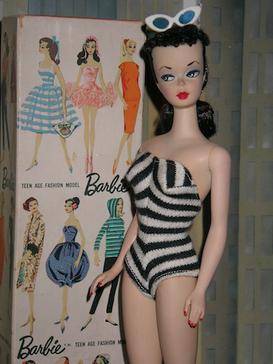How Barbie became a Pop Icon transcending generations
Barbie, the teenage fashion model, was created by Ruth Handler, the co-founder of the toy manufacturing company Mattel Inc. It was inspired by a German fashion doll, Bild Lilli; a doll based on a character known as "a symbol of sex and pornography for the men of Germany".
 | |
|
Barbie debuted on 9th March 1959 at the American International Toy Fair and was a "crashing bomb," according to the New York Times. Sears, then a retail giant with the power to make or break a toy, refused to stock Barbie. A then-unprecedented $12,000 market-research test also found mothers hating the doll, even though girls loved her. But Barbie proved everyone wrong. In the first year of its launch girls snapped up 351,000 Barbie dolls at $3 apiece, making the doll a smash hit.
The unmatched success of Barbie is attributed to it's unique and innovative marketing strategy. Barbie was the first doll to be heavily marketed with television advertising. Mattel had bought commercial time on the most successful kid's television programme of the time, Disney's The Mickey Mouse Club. Also, Barbie's introduction into the market was carefully and consciously designed to not position it as just another plaything, but as a personality. It was provided with a 'back-story' - Barbie Millicent Roberts from Willows, Wisconsin working as a teenage fashion model - a narrative that established her personality profile within an imaginary but familiar universe. According to a research at the time, some 90% of girl's playtime was preoccupied with dressing and undressing Barbie. Mattel concluded that Barbie's appeal lay in her ability to evoke fantasy in the child.
The strong 'Brand Personality' of Barbie has ensured its position as the world's most famous doll. Mattel claimed that in 2008 an average of three Barbies were sold every second.
Supplement with:
Marketing: Concepts & Strategies (12Th Ed.) by William M.Pride for Barbie's Product Lifecycle Extension Strategies


Comments
Post a Comment